Kia Sportage: Ignition System
Description and Operation
Description
Ignition timing is controlled by the electronic control ignition timing system. The standard reference ignition timing data for the engine operating conditions are preprogrammed in the memory of the ECM (Engine Control Module).
The engine operating conditions (speed, load, warm-up condition, etc.) are detected by the various sensors. Based on these sensor signals and the ignition timing data, signals to interrupt the primary current are sent to the ECM. The ignition coil is activated, and timing is controlled.
Repair procedures
On-vehicle Inspection
Spark Test
1. Disconnect the ignition coil connectors (A).
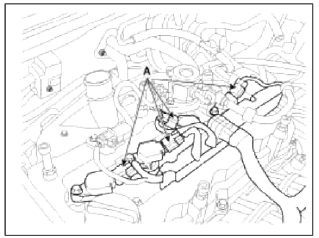
2. Remove the ignition coils (A).
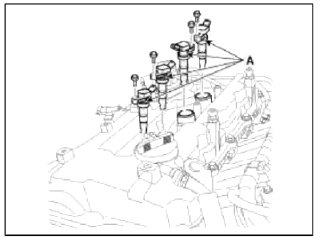
3. Using a spark plug socket, remove the spark plug.
4. Install the spark plug to the ignition coil.
5. Ground the spark plug to the engine.
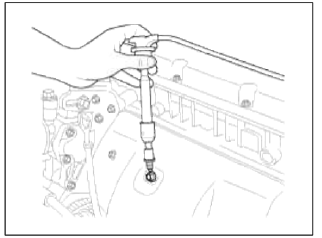
6. Check if spark occurs while engine is being cranked.
NOTE
To prevent fuel being injected from injectors while the engine is being cranked, disconnect the injector connector.
Crank the engine for no more than 5 ~ 10 seconds.
7. Inspect all the spark plugs.
8. Using a spark plug socket, install the spark plug.
9. Install the ignition coil.
10. Reconnect the ignition coil connector
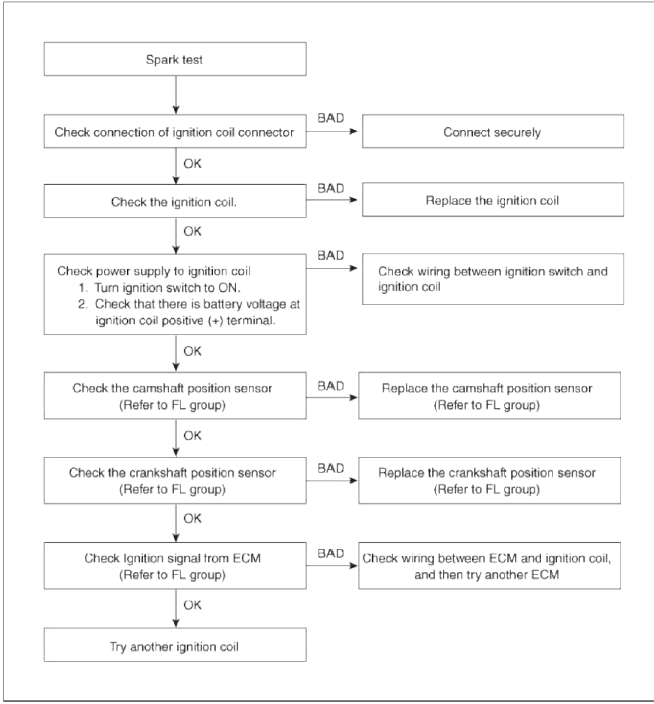
Inspect Spark Plug
1. Disconnect the ignition coil connectors (A).
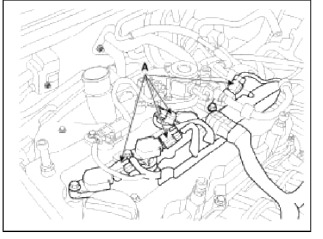
2. Remove the ignition coils (A).
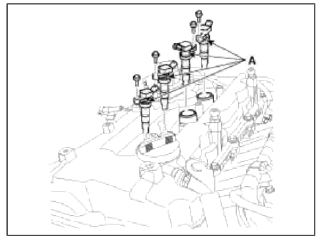
3. Using a spark plug socket, remove the spark plug.
CAUTION
Be careful that no contaminates enter through the spark plug holes.
4. Inspect the electrodes (A) and ceramic insulator (B).
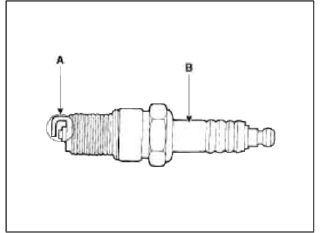
Inspection Of Electrodes

5. Check the electrode gap (A).
Standard
Unleaded : 1.0 ~ 1.1 mm (0.0394 ~ 0.0433 in.)
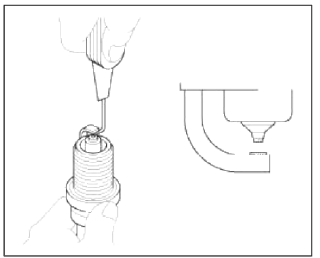
Inspection Ignition Coil
1. Measure the primary coil resistance between terminals (+) and (-).
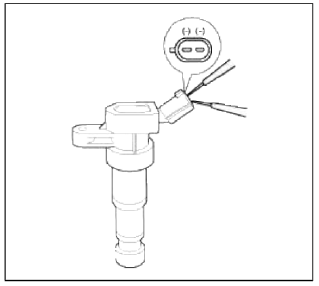
Standard value: 0.62Ω +- 10%
Removal and Installation
1. Disconnect the ignition coil connectors (A).
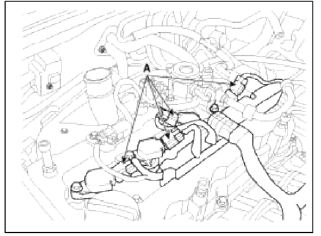
2. Remove the ignition coils (A).
Tightening torque: 3.9 ~ 5.9N.m (0.4 ~ 0.6kgf.m, 2.9 ~ 4.3lb-ft)
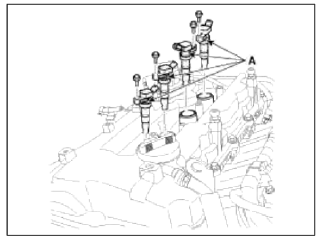
3. Installation is the reverse of removal.
READ NEXT:
 Description and Operation | Repair procedures
Description and Operation | Repair procedures
Description
The charging system includes a battery, an alternator with a built-in regulator, and the charging indicator light and wire.
The Alternator has built-in diodes, each rectifying AC
SEE MORE:
 Description and Operation, Components and Components Location | Oil Pump | Fluid
Description and Operation, Components and Components Location | Oil Pump | Fluid
Description and Operation
Description
The hydraulic system consists of oil, an oil filter, an oil pump, and a valve body (valves and solenoid valves). The oil pump is powered by the engine. ATF passes through the oil filter and gets distributed along the oil channels. The oil becomes highl
 Automatic transmission operation
Automatic transmission operation
Depress the brake pedal and the
unlock button when shifting.
Press the unlock button when
shifting.
The shift lever can be shifted
freely
Automatic transmission operation
The automatic transmission has 8 forward
speeds and one reverse speed.
The individual speeds are selected automat
Content
- Home
- Kia Sportage - Fifth generation (NQ5) - (2022-2025) - Owner's Manual
- Kia Sportage - Second generation (JEKM) (2005-2015) - Body Workshop Manual
- Kia Sportage Third generation (SL) - (2011-2016) - Service and Repair Manual
- Sitemap
- Top articles